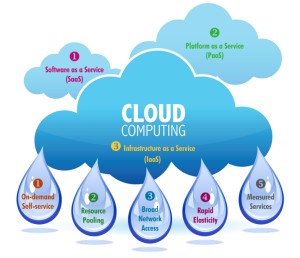As with many technology concerns, the question that often goes unanswered is where to begin. Often, companies feel the need to jump into the middle of the latest competitively essential technologies without having a clear plan in mind. In most cases, this is not through any fault of their own. It occurs because of understaffing or budget priorities. Cloud computing falls into this category.
Nearly everywhere you go where the conversation turns to technology, the subject of cloud computing is brought up. What cloud computing is, and how it can benefit your business is obvious to IT professionals. What is not so obvious is how a consistent strategy can be developed to implement it into a business given the problems of budget restrictions and IT people stretched to their limits with the existing workload.
Creating a simple and practical cloud computing plan does require some thought, but it not an unreachable goal. It does require a foundation of elements that you can use to build the future of your cloud computing strategy.
Security Everything that speaks of cloud storage and data will hear the loud call of security. With major storage providers such as AT&T, Google, and IBM having been in the mix for years, available security solutions are both inexpensive and reliable.
Open Source This part of the total cloud solution is based on making do with restrictive IT budgets. Office applications that can do much of the in-house muscle work are open source, such as Google Apps. They are also compatible with the major software vendor file formats such Microsoft Office.
Backup Strategy The first priority of any data-critical technology is developing a viable backup and recovery plan in case of a disaster. When dealing with the cloud, two critical considerations are security and cost. Small and large companies can find cloud computing solutions that satisfy both these needs without compromising either. When considering cost, you could consider what the value of your data is at risk in the event of a disaster.
Email Mobile technology has created a background demand for executives and employees to have access to information 24/7. Part of this is email, which holds essential information to schedule meetings or review exchanges away from the office. Cloud computing solutions often integrate email in their service package, making it unnecessary to have a separate email application while providing the required access.
Virtual Meetings Also known as web conferences, the technology has been around for decades. With the cloud, the variety of services has increased, and by adding VoIP, you can maximize the use of your cloud computing services.
These are the basic considerations necessary to start refining a cloud strategy for your business. Would you like some help in designing your cloud? With our industry based experts in Cloud Computing, you are in the right hands. Call us anytime at 630-365-0025.










